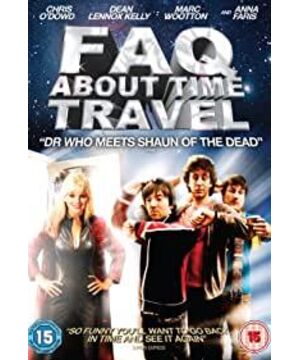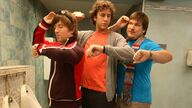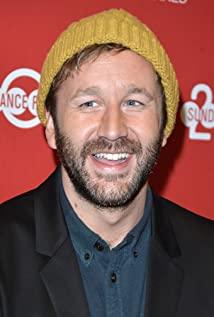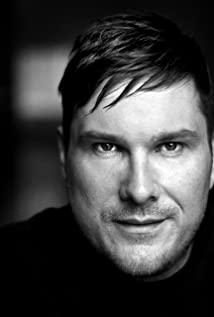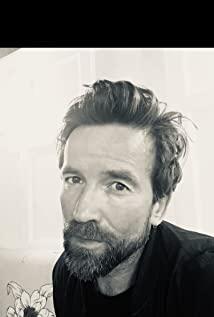Many people may be surprised to see the name of this movie, because it doesn't look like a full-blown movie name, but more like an academic work or an academic paper. But judging from the content of the film, it has never left these "Frequently Asked Questions About Time Travel". The structure of the film adopts a mode similar to "The Butterfly Effect" , which is not a simple multi-line narrative structure, and it is named "Chaos Reconstruction Mode". Here we must first explain a concept-chaos. The "chaos" mentioned here is not the "wonton" that is eaten, but is derived from the "principle of chaos". To explain the principle of chaos in simple words is that in a system, a change in the initial value will have a huge impact on the result. Later, there is a very vivid analogy that compares the principle of chaos to "The Butterfly Effect"-a butterfly in the Brazilian rainforest will cause a hurricane in the Indian Ocean by flapping its wings. In fact, we all understand this truth, because in the ancient Chinese "I-Ching" , there is a saying "the smallest difference is a thousand miles away", and the meaning is basically the same. So what is "chaos reconstruction mode"? As the name suggests, it is to reconstruct the root cause in a system dominated by the principle of chaos, that is, to constantly search for the root cause that triggers the follow-up effect, and then change this root cause to cause a series of changes in the follow-up effect. One of the advantages of using this mode for narrative is that it can get rid of the rigid mode of single-line narrative or multi-line narrative, and replace it with a more cyclical mode full of possibilities. This kind of narrative structure will make the film's story full of plot trends that already exist in or outside the imagination of the audience, and bring unexpected endings one after another.
The film "Frequently Asked Questions About Time Travel" is very similar in structure to "The Butterfly Effect", but it has many features of its own. For example, the unresolved scenes set at the beginning of the film are all shown one by one in the later film, so that the audience can see that this is actually a big circle, and the three protagonists circled a big circle and returned. origin. If it's just that, that's all, there is a mystery at the end, which seems to lead to the next more confusing story. It's like not returning to the original position after completing the last step of a lap, but starting to draw the next lap. In my opinion, it is impossible to make a sequel to such a film full of black humor, so the open ending at the end of the film is just a joke that the director wants to make with the audience, as if he had watched this movie and carefully. After chewing, it feels a bit like listening to a joke. On the surface, I think I should smile slightly, but I am deeply attracted by this story.
From the story point of view, this film is not a breakthrough innovation, but it fits the core content of the film—Frequently Asked Questions About Time Travel. From start to finish, the film is tightly surrounding
The core issue of time travel is used to unfold the plot. Whether it is the three unhappy men, the time hole tinker from the future, or the rewriter from the future, they all serve to interpret this core issue. Although there are no gorgeous shots in the film, nor too many fascinating future scenes, only the differences in time and space are expressed through the protagonists’ language and clothes, but this style does not affect the storytelling. From another perspective, this kind of "simple narrative" is easier to please the audience who eats too much "popcorn". In my opinion, the director is very rigorous when telling this story, because there is no need to consider the big scene, so the grasp of the details can be thorough and precise. In the process of "loop viewing", almost no narrative omissions were found, of course, this does not include the scientific issues involved in the film.
In fact, this movie is not a science fiction film that is very in line with scientific norms, or a science fiction film with a very strong fantasy nature. This fantasy is not presented through the usual unconstrained images, but rooted. In the heart of every viewer, this kind of fantasy is more participatory and interactive. Of course, as a science fiction film, if there is no scientific foundation, it can only be called a fantasy film. "Frequently Asked Questions About Time Travel" has a closely-revolved paradox-the grandfather question. This question is also a well-known paradox about time travel. The content is: if a person goes back to the past through time travel and kills the grandfather who existed in the past, then there will be no father, and therefore no person, in the future world. Since this person does not exist, how can he go back in time and kill his grandfather? This constitutes a contradiction. In the film "Back to the Future", there is such a bridge, Martin goes back to the past to match his parents to form a romantic relationship, because his parents cannot form a romantic relationship, then there can be no future Martin. Therefore, when his parents were in crisis, Martin began to disappear from the family photo taken in the future. In fact, this grandfather problem is used here. Of course, this paradox could not be fully explained, because if his parents were really separated, what would happen to Martin, who had already returned to the past? Evaporate instantly? Withering slowly? Of course, "Back to the Future" does not assume this ending, because this is a road that cannot be made through. And in "Frequently Asked Questions About Time Travel", this issue is also involved, and no conclusion can be drawn, which is why the last circle of the film is not drawn before the other circle is entered. This is like the "8" dance of a bee. It is destined to have one circle after another. You can't just draw one circle. It doesn't make sense to draw only one circle philosophically. At the end of the film, the idea of solving this problem was proposed. This is another problem of time travel- parallel universesproblem. Regarding the issue of parallel universes, to put it simply, the world is not single, but multi-line, that is, there are countless parallel worlds that are exactly the same as ours. The so-called shuttle space-time refers to the time a of the world A. Time b in world B. Many problems can be explained with this kind of thinking. I once read an article about the deconstruction of "The Butterfly Effect". This method is used, and it still looks very strict. The idea of parallel universes is just a kind of philosophical thinking. If you trace the roots, you can go back to the "cave metaphor" made by Πλατών in "Πολιτεία" . It is this wonderful "cave" that helped The Wachowskis outline the huge and complex "Matrix". Of course, these are all It's a digression. Going back to this movie, the principle of parallel universes can also be used to explain the "grandfather problem" from another angle. That is to say, someone X went from time a in world A to time b in another parallel space B. In B of b, X's grandfather was killed by X, but the reason why X can kill grandfather in B is Because the death of the grandfather in B does not affect the life-death relationship of the grandfather of X in parallel universes A. Therefore, the paradox of the "grandfather problem" is resolved in this way. Similarly, you can also use this method to explain all the details in the film, and interested friends can do it by themselves with this method of formulating equations and setting unknowns, which is actually quite interesting. Regarding the issue of parallel universes , there is a more vivid explanation in Jet Li 's bad film "Universe Wanted" or the translation called "The One" . Similarly, interested friends can also look for it.
In general, "Frequently Asked Questions About Time Travel" is an alternative science fiction film full of strong British black humor, but this low-cost science fiction film does not affect its excitement in the slightest, which is more intuitive. It’s clear that the scene doesn’t have to be, A good story and a good idea are the cornerstones of a good movie. This psychologically constructed flavor tends to have a more lasting flavor than popular and gorgeous visual effects.


